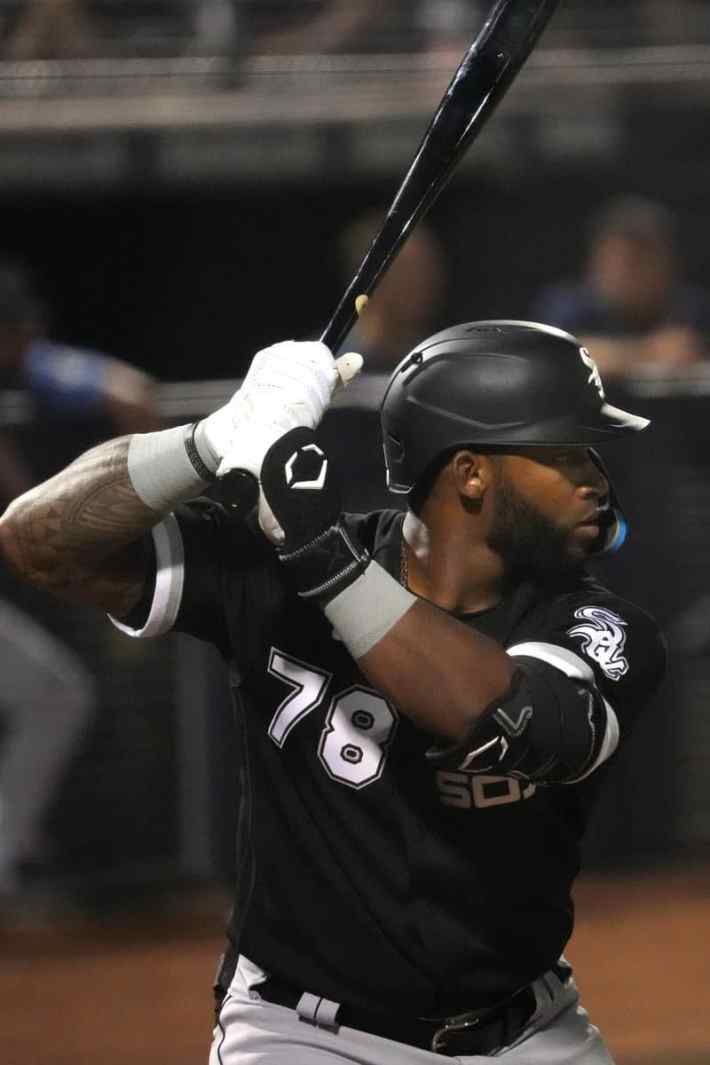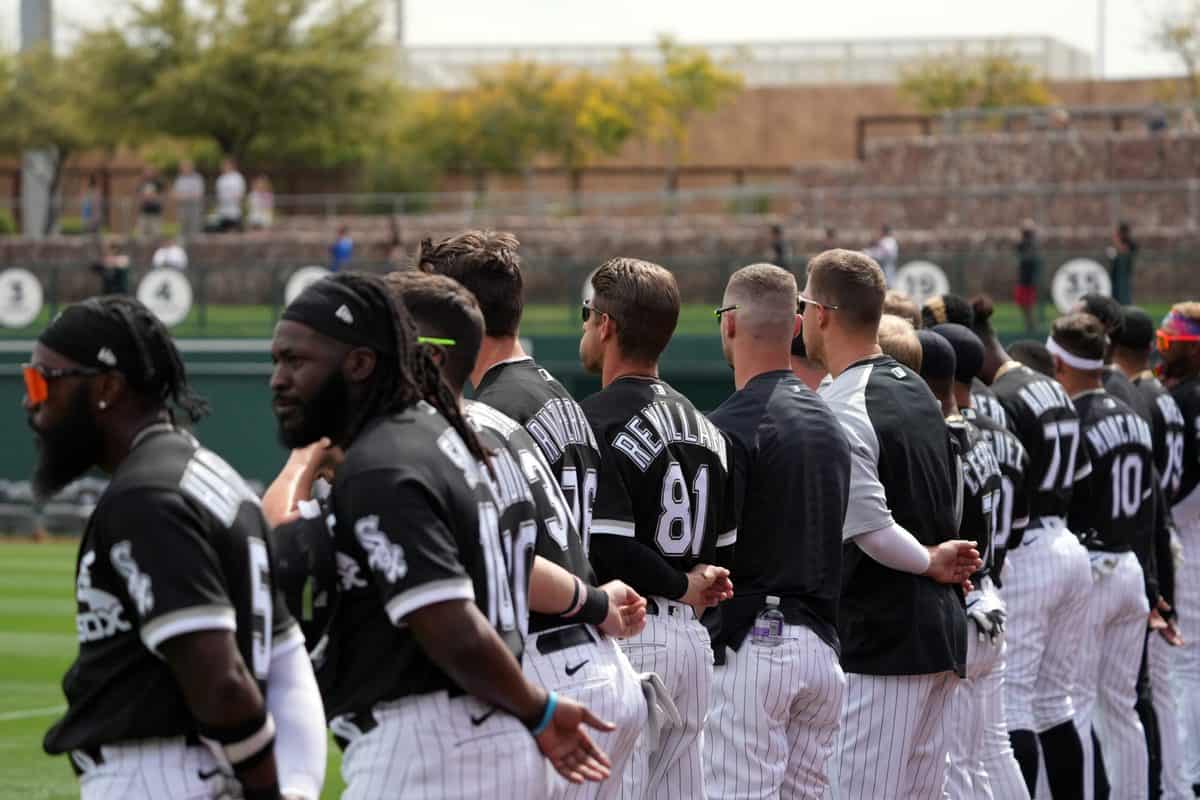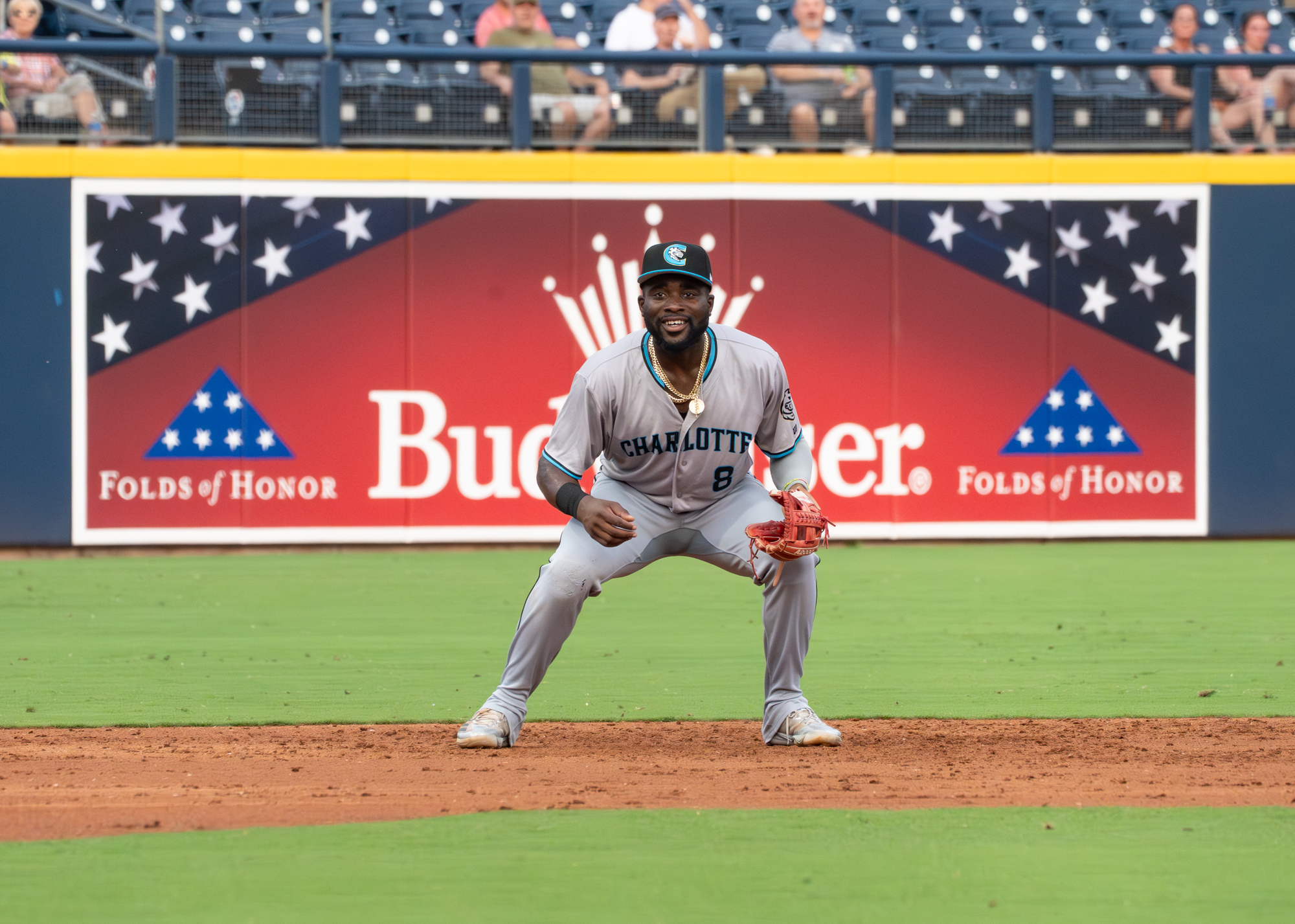With the White Sox releasing their Opening Day 28-man roster in advance of Friday's date in Detroit, I have the final information I need to lock in the order for this annual exercise of ranking the most essential White Sox of the coming season.
Of course, here's the point in the intro where I say the order doesn't really matter, and this ranking is merely a device to take snapshots of where each player stands at this point in his career, and where it fits into the White Sox's larger goals. Last year's Sox did me the favor of needing just about all of last year's list to get through the season, and with expanded rosters to start the season and an abbreviated spring stoking fears of pitching injuries, there's a chance that this year's list is too short.
Then again, if it gets to that point, it probably includes players who are not yet in the organization. In tribute to Evan Marshall, I stopped counting at 43 (with last year's ranks in parentheses).
No. 43: Kade McClure (NR)
The White Sox will probably need extra starters, and McClure’s been able to top 100 innings in each of the last two seasons he’s played. It’s just a matter of whether he can survive at Charlotte without overpowering stuff, and the 6.81 ERA in his first go-around suggests he’ll have adjustments to make.
No. 42: Anderson Severino (NR)
I’m skeptical that he’ll have the command to make his above-average arm strength stand out at the major-league level, and seeing Tanner Banks added to the 40-man ahead of him means his work will be cut out for him as the roster shrinks from 28 to 26.
No. 41: Danny Mendick (29)
He’s here because he’s on the Opening Day roster, but he’s drifted further away from league average the more MLB action he’s seen.
- 2019: 40 PA, 787 OPS, 107 OPS+
- 2020: 114 PA, 664 OPS, 81 OPS+
- 2021: 186 PA, 589 OPS, 64 OPS+
Given the number of utility options in the White Sox’s upper minors, it wouldn’t have surprised me if the White Sox traded, outrighted or otherwise let Mendick go during the offseason. For now, he’s hanging around, giving the Dancing for Dubs shirt one last run of relevance.

No. 40: Jose Rodriguez (NR)
He doesn’t turn 21 until May, so if he finally encounters his first durable challenge in the upper minors and needs a year to adjust, everybody should understand. It’d just be nice if he could sustain his momentum and transcend a utility infielder label, whether for the White Sox or another team.
No. 39: Adam Haseley (NR)
Individually, it’d be a triumph if Haseley found meaningful playing time on the 2022 White Sox, because that’d mean he’d figured out how to overcome some hurdles and recapture some of his first-round talent. In the context of the team, it’d be a little more worrisome.
No. 38: Ryan Burr (NR)
I had Burr ahead of the next man up before he opened the season on the injured list with a right shoulder strain. When healthy, his ability to get grounders gives him a defined purpose for rostering, but he has a history with that particular caveat.
No. 37: Matt Foster (24)
Foster’s fastball-changeup combo stopped fazing hitters in the big leagues (6.00 ERA, nine homers in 39 innings), but it still overwhelmed those in Triple-A (23 strikeouts against two walks over 14⅔ innings). He could use a tiebreaker between his 2020 and 2021 selves, but the White Sox have piled up right-handed options in front of him – Kendall Graveman, Joe Kelly, Kyle Crick – suggesting they’re not all that concerned about figuring out which one he is.
No. 36: Carlos Pérez (NR)
The White Sox’s catching tandem of Yasmani Grandal and Reese McGuire shouldn’t require tweaks, but if Grandal’s knee requires more rest, Pérez could complement McGuire in a platoon situation. He has some improvement remaining in his first tour of Triple-A, but his hit tool and throwing arm look more playable than that of Seby Zavala, who is now off the roster.
No. 35: Oscar Colás (NR)
If he needs a full year or two in the minors to acclimate to professional baseball in the States, that's fine. There's just the chance that he could blow the expectations out of the water and establish his own express lane, so here you go.

No. 34: Yoelqui Céspedes (NR)
Céspedes feels like he's in a similar spot to Colás, in the sense that he doesn't need to reach the majors this year. The hope is that he tightens up his strike zone to a functional level against upper-minors pitching sooner rather than later, but he's not on the 40-man, and the White Sox are opening the season with adequate outfield depth for once. Céspedes' performance might be more vital as a potential player to trade, especially if Colás provides some welcome cover in center.
No. 33: Jimmy Lambert (26)
Lambert has shown the ability to face a lineup once, and that’ll probably be enough to distinguish him in as a 27th man for doubleheaders. One would hope that Reynaldo López, Vince Velasquez and Johnny Cueto would be enough to keep the White Sox from needing all that much more from him.
No. 32: Yolbert Sánchez (NR)
I have a hunch that he could be the starting second baseman during the second half and the White Sox would actually feel pretty good about it, but obstacles remain. He’s not yet on the 40-man roster, so there’s also a scenario where everybody enjoys the Josh Harrison experience, the other second basemen also improve and Sánchez gets dealt. This ranking splits the difference.
No. 31: José Ruiz (33)
Jose Ruíz survived his first year out of options by reliably knocking out low-leverage appearances to help end lopsided games. He faltered in most tests above that pay grade, which means that he could end up on the wrong side of a numbers game if everybody’s healthy. But with Craig Kimbrel traded, Kelly’s start delayed and Crochet out for the year, Ruíz might once again survive by staying healthy and keeping his head down.
No. 30: Bennett Sousa (NR)
He broke camp with the team along with fellow under-the-radar lefty I’ll be talking about next. The next few weeks will inform everybody about which kind of southpaw will be more useful. If Tony La Russa needs more of a lefty-on-lefty weapon for an inning at a time, Sousa could be the guy for that. If multiple innings are a priority, then he might instead roll with…
No. 29: Tanner Banks (NR)
Show me a veteran minor leaguer weeping tears of joy when informed that he’s breaking camp with an MLB team for the first time in his life, and I will click on that video. Unfortunately, the White Sox did not share footage of how Banks received the news, which is a shame since he’s among the best subject matter in the system. He’s a 30-year-old lefty selected in the 18th round back in the 2014 draft (one round ahead of Aaron Bummer). He went from a journeyman rotation-filler to somebody worth rostering because he’s 1) left-handed and 2) throwing 94 when he didn’t before. He has plenty of experience throwing 100-plus innings a year, so he offers the ability to cover multiple innings.
No. 28: Romy Gonzalez (NR)
If Gonzalez can summon an encore to his 2021 season while biding his time in Charlotte, he could be the first man up to cover a few different positions. He only played 15 (very good) games at Triple-A last year, so biding his time there for a month or two will still tell us a little that we didn’t already know. If he keeps the strikeout rate at or below 25 percent, then he’ll have nothing left to prove.
No. 27: Kyle Crick (NR)
Crick could’ve been in Chicago last year, what with 15 strikeouts against seven baserunners over 10⅓ Innings at Charlotte, and previous runs as a competent mid-leverage reliever with Pittsburgh in his not-too-distant past. He picked up where he left off this spring, allowing just a hit and two walks over seven scoreless innings, so he’s in a position to slot ahead of Ruiz from the right side, and impress for more while Kelly’s out.
No. 26: Vince Velasquez (NR)
This doesn’t seem like it’s going to end well.
No. 25: Johnny Cueto (NR)
What we want from this late-spring back-end bolsterer is Miguel Gonzalez’s understated competence with a little bit of El Duque’s flair. What we don’t want is Ervin Santana’s numbers with Odrisamer Despaigne’s kitchen-sink desperation. He seems better suited for buying time than Velasquez.
No. 24: Jake Burger (NR)
You couldn’t ask more from Burger in 2021, yet he left room for improvement, and being healthy enough to accumulate reps should help. He has the ability to lower his strikeout rate, and while second base still seems like a stretch, the effort to improve his athleticism should only make him more useful at third. Yoán Moncada’s season-opening injury gives him some an opportunity to impress.
No. 23: Adam Engel (20)
When you didn’t want to see him, you saw way too much of him. When you wanted to see more of him, he wasn’t available. The White Sox have tried to thread the needle this time by making it such that his starts shouldn’t be necessary, but whatever ones he makes are good ideas.
No. 22: Reynaldo López (25)
If you can isolate him as a No. 5 starter and not as a guy replacing Lance Lynn in a rotation, then he’s a better option most teams have. His lack of a dynamite secondary pitch makes him vulnerable no matter how much his vision has improved, but he competes with what he has, and sometimes that’s good enough.
No. 21: Josh Harrison (NR)
He might be an unnecessary signing, what with Leury García and two prospects having the ability to cover second base with some unexplored offensive ceiling. Still, if Harrison can duplicate last year’s work in Washington as an action-oriented professional with plenty of personality, nobody will mind the redundancy.






